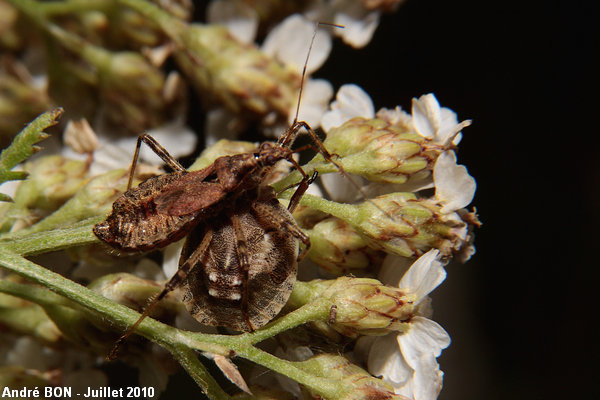
| Tree Damsel Bug (Himacerus apterus (Fabricius, 1798)) |

|
|
Scientific name: Himacerus apterus (Fabricius, 1798) Common name: Tree Damsel Bug French name: Order: Heteroptera Family: Nabidae Wingspan : 8 to 10 mm. Biotope: In trees, shrubs and high plants. Geographic area: Europe, southern and central Asia. Observation period : July to October. The eggs, which are laid in late summer on plant stems, will give larvae in spring. These larvae look like adults with a smaller size and without wings. |
The bugs of the Nabidae family are characterized by a head being thinner than the pronotum, by long and thin antennae and by strong femorae on the fore legs. Himacerus apterus shows antennae which are longer than the body (thorax and abdomen). The first article is as long as the head. The hind tibiae show long hairs (about twice as long as the width of the tibia itself). The abdomen is wider at the rear. The connexivum (lateral edges of the abdomen) is black with reddish orange spots. The hemelytra are short and do not extend beyond the third or fourth abdominal segment. The similar species, Himacerus mirmicoides, has antennae which are shorter or as long as the body. The first article is shorter than the length of the head. The hind leg tibiae do not show so long hairs. Himacerus apterus feeds on small insects and spiders. |
| [To know more about the Tree Damsel Bug] [Top] |

|
I have found this Himacerus apterus on the underside of an umbelliferae flower, in a clearing, while I was rather looking for spiders. I am rather confident about this identification based on the antennae and on the long hairs on the hind tibiae (more visible on the non-reduced picture). Furthermore you can see a typical meal for this species. |